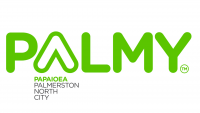 Balancing the demands of Movement and Place for liveability and accessibility.
Balancing the demands of Movement and Place for liveability and accessibility.
Palmerston North City Council (PNCC) has a problem statement in their AMP that reads:
“A car centric network and poor travel choices are causing decreasing liveability and accessibility”.
This statement in part recognises that decisions in the past have created a situation where Place has not been a significant consideration in transport planning. The ONF project facilitated a workshop with PNCC in late 2020 to trial how the ONF movement and place classifications could assist in both understanding the issue and enabling the multi-disciplinary discussion to aid planning the way ahead.
A key feature of the inner city transport network are the wide avenues that radiate out from the city centre. These corridors have the capacity to serve high traffic volumes across a highly permeable transport network into and out of the central city, and therefore exemplify the freight and car centric network issue to be addressed. Having wide carriageways, many of these streets have the capacity to support a range of modes comfortably. At present most of these are optimised to prioritise general traffic as the primary mode of movement. The workshop utilised visualisations of designated primary routes to facilitate a discussion on mode share. This allowed the group to see where significant mode share issues were likely to occur, and how we can change mode priorities to enable a more liveable city.
Figure 1. Palmerston North City Council primary modal networks

Overlaying the primary networks for each mode highlights areas of multi-modal use of corridors.
A key point of discussion throughout the workshop involved challenging some of the names of street categories, particularly ‘Activity Streets’. Activity Streets need to fulfil a critical role in the framework, defining streets that are in the mid-range for both movement and place. They are required to support a reasonable level of vehicular people movement, while at the same time provide places that support on-street activity that is typical to most suburban centres. The name is intended to describe that these streets support activities other than residential living. It is just that, sometimes, they do not appear to be very ‘active’.
Figure 2. Activity streets

Activity streets are in the mid-range for both movement and place and support a range of functions.
There was much discussion among workshop participants about whether Palmerston North had any streets that would be classified as City Hubs. Parts of Te Marae o Hine | The Square are the most likely candidates to be considered as City Hubs, being the centre of activity, next to the main Public Transport interchange and having the highest density adjacent land-use. It was considered that the actual level of both people movement along and across the streets, and the level of on-street activity and place function were both below the threshold to qualify as a city hub. Apart from the largest metropolitan cities in New Zealand, most RCAs are unlikely to have examples of every street category.

View of Main Street from Te Marae o Hine | The Square.
Within the city centre there are examples where PNCC have given over significant proportions of the carriageway for place-making. Cuba Street is an example where pedestrian movement between the town centre and the CET Arena has been prioritised. Enhanced streetscape along the eastern side of Te Marae o Hine | The Square provides pedestrian links between the transport hub and key destinations in the city centre, as well as a place people can spend time.

Cuba Street.

Te Marae o Hine | The Square East.
The workshop reviewed photos of a number of streets around Palmerston North to generate discussion on the street categories. The photo below generated much discussion as it is not part of the road network (it runs through Victoria Esplanade, a city park) although is used as a ‘rat-run’ for traffic wishing to avoid congestion on other routes , alongside cyclists and pedestrians. The ONF allows for including these ‘off-lines’ routes within the overall transport network to ensure the complete view of all contributors to movement and place are included in transport and land-use planning.

Palm Drive in Victoria Esplanade.